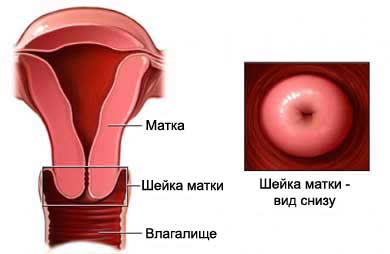Mazok Papanicolaou – Screening for cervical cancer
Description Pap smears
Cervix – open part of the uterus. It can be seen in the upper part of the vagina. The cells on the cervix can become cancerous. The transition from normal cell to cancer cells takes time. Changes if detected early can be treated before cancer development. The Pap test is a way to find cancer cells, or a change in the cervix.

Reasons for a Pap smear
The Pap test is often done as part of a gynecological examination, to detect changes in cervical cells (cervical dysplasia), which can develop into cancer. The procedure can also detect cancer cells.
Currently, Pap smear is recommended:
- At the age of 21-29 years, every two years;
- At the age of 30 and older every three years;
- If age over 65 years, You can not conduct a pap smear, If you previously had three normal results in a row.
It is necessary to carry out a smear more often, If there are negative results or certain diseases, eg, depressed immune system or a history of cervical dysplasia or cervical cancer.
How is the Pap smear?
Preparation for the procedure
- No need to schedule a Pap test during your menstrual period. If possible, you must schedule it two weeks after the first day of menstruation;
- Do not use vaginal creams, medicines, or syringes over 72 hours before the test;
- Do not use contraceptives, such as spermicidal foams, Creams, gels for 72 hours before the test;
- You can not have sex for 24 hours before the test.
We must tell the doctor the following:
- Menstruating;
- Pregnancy;
- Previous Pap test shows abnormalities;
- Previously conducted cervical procedures;
- Sexually active;
- The presence of HPV or other sexually transmitted diseases in the past;
- The presence of abnormal vaginal discharge or vaginal infections;
- Available operations, radiation therapy or Chemotherapy;
- Has pills, hormone pills or hormone creams.
Description of pap smear
Surveyed will lie on your back on a gynecological chair, placing your feet in holders. The doctor inserts a speculum into the vagina, and gently opens it. A fine brush or spatula will be used to wipe the surface of the cervix and its canal.
The cells of the cervix, which were extracted using tools are placed in the fluid-filled containers. The cells will be sent to the laboratory for testing.
After Test
After the Pap test to do daily chores.
How long will the procedure?
Pelvic exam takes less than five minutes.
Will it hurt?
Mazok Papanicolaou, usually, painless. It may feel some pressure or a small spasm, when the cervical cells are collected.
Pap test
Pap test are sent to your doctor within 2-3 weeks. The doctor informs the patient about the results. If necessary,, He will discuss the analysis or treatment:
- If the cells are normal, requires no treatment. It will be necessary to continue regular screening Pap;
- If contamination is detected, It will be prescribed treatment;
- If found abnormalities of the cervix, additional tests will be done. Once the doctor determines the cause of anomalies, he will discuss treatment options. Further tests may include:
- Colposcopy – Study of the vagina and cervix using a microscope with a small increase;
- Biopsy – Selection of a small number of cervical tissue for further study;
- Additional tests Pap.
Communication with the doctor after a Pap smear
Upon returning home, you need to see a doctor, If the following symptoms:
- Symptoms of infection, including fever and chills;
- Unpleasant odor from the vagina;
- Pain or unusual discharge from the vagina;
- Severe abdominal pain or swelling.
